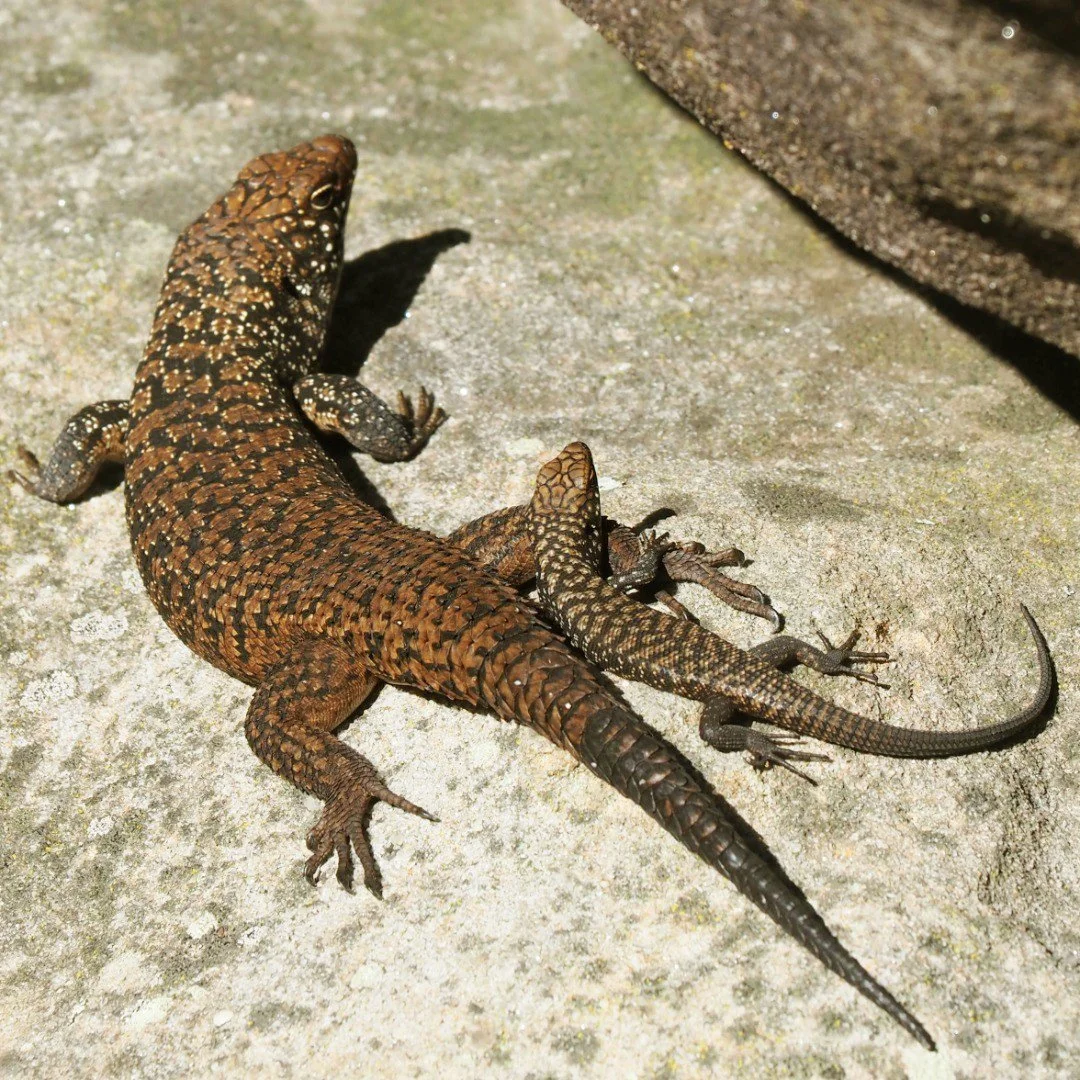Communal Lizards and Ridgeline Views
During the recent Annual Ridgeline walk, our group was delighted to spot Cunningham’s Skinks (Egernia cunninghami) basking on an isolated rocky outcrop. These large, sun-loving lizards are remarkable not only for their spiny tails and keeled scales but also for their highly social behaviour. Unlike many reptiles, Cunningham’s Skinks live in communal groups, which helps them watch for predators and enhances their survival. When threatened, they can take cover between rocks or hollow logs, and if further harassed, they inflate their bodies to make themselves harder to dislodge.
Found in temperate forests and woodlands with rocky shelters across Victoria, New South Wales, and South-east Queensland, these omnivorous lizards feed on insects, snails, and vegetation. Cunningham’s Skinks are viviparous, giving birth to live young, and they are highly monogamous, choosing mates that are unrelated to avoid inbreeding. Protected across all states, and endangered in parts of South Australia, seeing these skinks in the wild is always a joy, and a wonderful reminder of the unique wildlife that shares our local landscapes. Apologies for the grainy photos taken on my phone, we have included a much clearer image of two Cunningham’s Skinks, from the Australian Museum.





